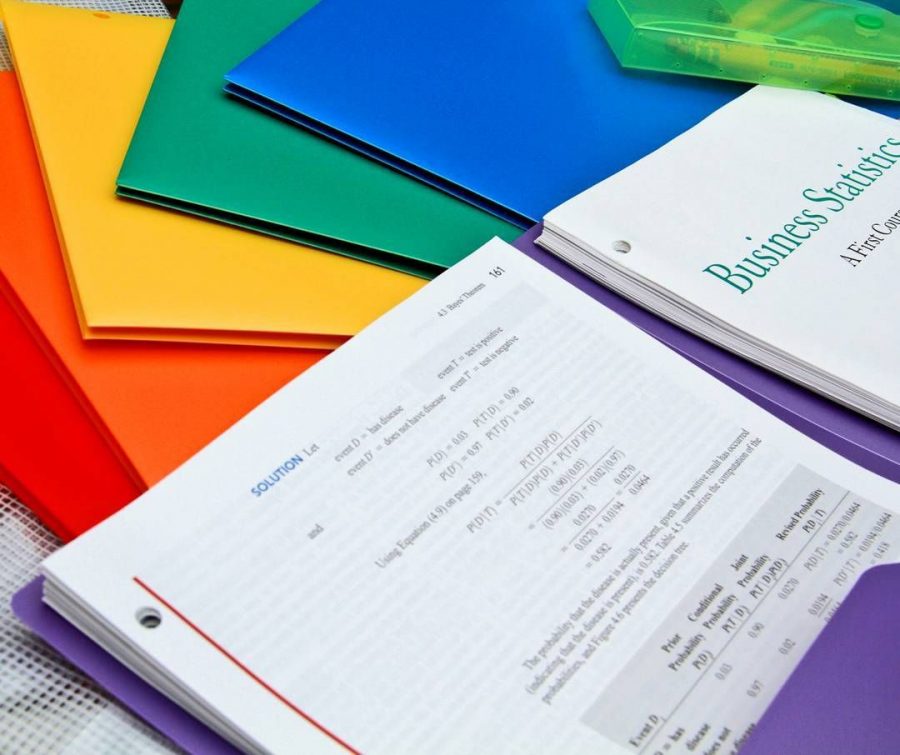The color of school
September 27, 2018
While it seems that the colors of school supplies are the extent to which colors impact the daily lives of students, they may relate to the way students learn and retain information in other ways.
According to psychology teacher Cindy Tilt, there is research being conducted that showcases the effects colors may have on brain stimulation of students.
“There’s actually a lot of research going on with this,” Tilt said. “It’s an area that we, like so many things, are just learning about. We know that color can impact mood, which can then impact what you pay attention to and how well you learn.”
Because the research is so new, it is being examined through a modern, technological lense.
“[There’s] even talk about what color classrooms should be, but now they’re also adjusting that to ‘what color should online learning be?’” Tilt said.
Online learning refers to virtual classrooms and classes. Because of the versatility of online learning, there are opportunities to use colors to support student focus.
According to shiftelearning.com, “Using the right color, and the correct selection and placement can seriously affect the feelings, attention, and behavior of people when learning.”
Certain colors are known to evoke specific feelings, which can then impact student performance in both virtual and physical classrooms.
For example, according to Tilt, green is a relaxing color and can help with long-term concentration. Lighter shades of blue can be calming or help with intense intellectual engagement, while darker shades verge on creating a sense of detachment. And colors such as orange and red are known to increase focus.
“Orange seems to stimulate oxygen flow to the brain which can energize people,” Tilt said. “That makes them feel more awake [and] alert which obviously is going to help with learning.”
The saturation of colors can also impact the way students feel when they see them.
“You want to modify the color, you don’t want it to be super bright especially if someone is maybe prone to anxiety,” Tilt said. “Some of those really bright vibrant colors might distract [students] too much.”
As for her own teaching materials, Tilt doesn’t necessarily always think about the way a certain color may make a student feel, but a couple of specific colors are useful in representing the importance of specific information.
“I’ve noticed that when there’s stuff that I really want to get [the students] attention I do tend to put it in red or orange,” Tilt said.
Research done by Margarete Imhof in her 2004 study, “Effects of color stimulation on handwriting performance of children with ADHD without and with additional learning disabilities,” shows that experimenting with color in the classroom may positively influence academic performance of students with attention-deficit/hyperactivity disorder (ADHD).
“Typical features of hand-writing improve with the colored writing paper and lead to a better overall legibility of the work,” Imhof wrote. “This supports the conclusion that some control or monitoring processes must have been exerted more efficiently than in the standard situation.”
Tilt has had students in the past whose learning experience has improved through utilizing colored resources.
“I’ve had students with dyslexia who will use a blue transparent sheet that they put over what they’re reading and that seems to help them read more easily,” Tilt said.
However, according to Aaron S. Benjamin, professor of psychology at the University of Illinois Urbana-Champaign, scientific support is lacking when it comes to backing up claims about how colors can affect students and how they learn.
“I think it’s generally true that people, especially kids, have preferred colors and those colors have positive associations for them,” Benjamin said. “But I’m a lot more skeptical that you can use that to help kids learn in the classroom, though there are some people that claim benefits of various color displays.”
Despite uncertainty surrounding the scientific credibility of the affects colors can have on the way students learn, Tilt encourages students to be aware of what helps them learn best.
“Ultimately people have colors that they like, and they may not even know why they like them, but if a color makes them feel a certain way then they should just use that to their advantage,” Tilt said. “Whatever the research says isn’t all that important. It’s just their own subjective experience and how they learn better.”









John Hayward (faculty) • Oct 23, 2018 at 8:53 am
In high school, my passing period was only three minutes. What little time I did have to get to my locker certainly wouldn’t include looking for my books and folders, so I created a color-based system. If my math book was red, I would partner it with a red notebook and red folder or binder. Open locker, grab everything red and go! My favorite class was English, so I chose my favorite color blue to correspond. Science was green, History was yellow and so on. Those memories remain with me today and it’s true about the emotional attachment. If red is an aggressive or angry color, then you now know how I feel about math!